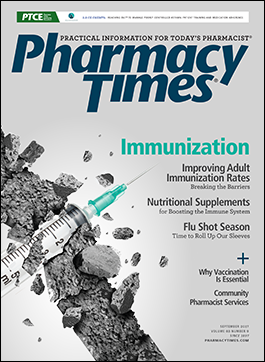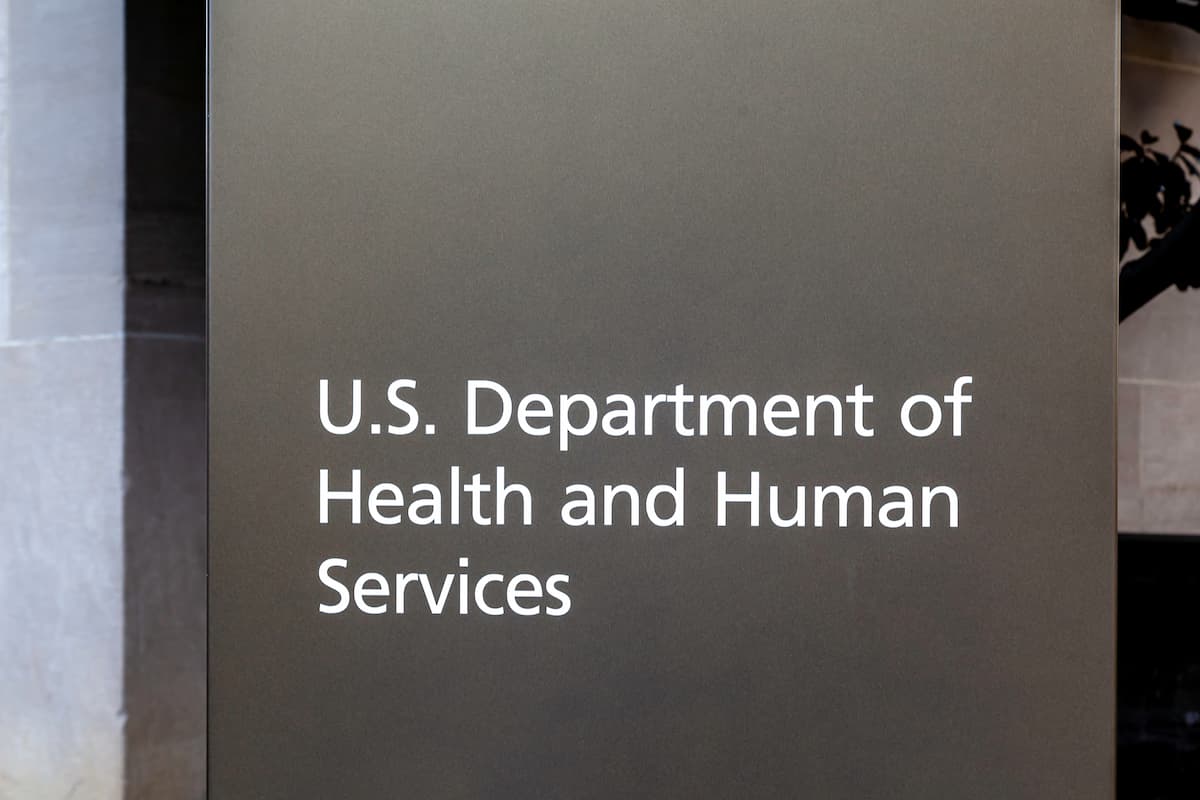Publication
Article
Pharmacy Times
Flu Shot Season: Time to Roll Up Our Sleeves
Author(s):
The 2017-2018 influenza immunization season is right around the corner, and we need to ensure that community pharmacies across are prepared for the influx of patients.
It's that time of year again. The 2017-2018 influenza immunization season is right around the corner, and we need to ensure that community pharmacies across the nation are prepared for the influx of patients with sleeves rolled up and arms ready. Influenza is a major cause of morbidity and mortality in American adults of all ages, and since the 2010-2011 flu season, the Advisory Committee on Immunization Practices (ACIP) has recommended that all Americans 6 months and older receive the vaccine.1
Availability of flu vaccinations at community pharmacies has been successful in many ways. Vaccination coverage, necessary for herd immunity, has been troublingly low in adolescents and adults. Providing alternative vaccination delivery sites, including pharmacies, has increased vaccination access for populations who cannot easily get to physicians’ offices. The convenience, walk-in service, and extended hours available at pharmacies also appeal to patients.2
Certain facilitators and barriers can help or hurt pharmacy-sponsored vaccination programs (table 12,3). Pharmacist-administered immunization laws differ significantly among and within states, with more than 200 distinct legal variables reported across 51 state jurisdictions. The differences that most affect pharmacists’ ability to administer vaccines are age restrictions, specific vaccine restrictions, and third-party authorization requirements.3
Pharmacists may need to especially step up efforts related to community education. The results of a recent study indicate that just 1 in 5 American adults realizes that the ACIP recommends annual vaccination for all adults. Just 40% of American adults reported being vaccinated by early November in recent years. Vaccinations appear to peak in the December, with 8% of adults receiving the flu vaccine between December and May. Pharmacists might consider targeting groups that have the greatest knowledge gaps: adults in their prime productivity years, between 18 and 50; those with lower educational attainment; and those who do not have high-risk conditions.4
KNOW THE FACTS
Pharmacists need to educate themselves, too, and be aware of certain facts that may influence patterns of flu virus vaccine.
First, influenza activity was only moderate during the 2016-2017 season, with peak activity occurring in February 2017.5 Seventy percent of cases were attributed to influenza A and 30% to influenza B.6 Sometimes people develop a false sense of security after a mild to moderate flu season. They may need to be reminded that it is impossible to predict each flu season’s severity, and the next one may be more severe than the last. The best defense is vaccination.
Efficacy is always a concern. The US Influenza Vaccine Effectiveness Network reported that last year’s vaccination reduced the overall risk of influenza-related medical visits by 42%. The network estimated that the vaccine effectiveness against the most common variant of influenza (A[H3N2]) was about 34%, while its effectiveness against influenza B was 56%.5 Vaccine effectiveness depends on how well experts predict future circulating flu virus strains and how well circulating strains even aid immune response.7 Some points that pharmacists need to remember:
- From time to time, mismatches occur due to antigenic shift or drift.7
- Inactivated vaccines tend to be less effective than live attenuated vaccine (LAIV) in children, though the evidence is conflicting.7
- LAIV administered nasally is not recommended for children.8
- ACIP revised the influenza recommendation for pregnant women, indicating that they may receive any recommended, licensed, and age-appropriate flu vaccine, administered at any time during pregnancy, except LAIV.6
- Although the influenza vaccine may not be 100% effective, it does reduce the severity and duration of flu symptoms in most people.5
THE 2017-2018 FLU VACCINE
The FDA has approved the composition of the 2017-2018 flu vaccine (table 29). Quadrivalent vaccines are now available to address the possibility of B lineage mismatch that occurs when the circulating B influenza virus differs from that predicted in the trivalent vaccine.10
Antiviral medications such as zanamivir, oseltamivir, and peramivir do not replace vaccinations but are helpful to treat and prevent the progression of influenza. In most people, flu symptoms peak and resolve within several days and require only supportive care such as hydration, analgesics, antipyretics, and rest. Clinicians should prescribe inhibitor neuraminidase antiviral medications as early as possible if patients develop severe, complicated, or progressive influenza. In addition, they should consider using these medications in older adults who have comorbidities that increase the risk of serious complications.5 However, these drugs do not prevent complications, and any approach to severe, complicated, or progressive influenza should include an assessment for and treatment of any identified comorbidities. Clinicians should also note that although amantadine and flumantadine are approved for treatment and prevention of influenza A, many strains are now resistant to these drugs.11
END NOTE
Pharmacists are valuable assets for influenza immunization, especially in communities with limited access to medical services. Adult vaccination rates are far lower than those of children, among whom vaccinations have had remarkable impact.12,13 The CDC estimates that since the early 1990s, vaccines have prevented 21 million hospitalizations and 732,000 deaths among children.14 Pharmacists who administer the flu vaccine to walk-in patients are well-advised to ask questions about other vaccines and take the opportunity to update if needed. In this way, we can elevate the impact of immunizations among adults to resemble that among children.
Ms. Wick is a visiting professor at the University of Connecticut schools of pharmacy and nursing.
References
1. CDC. Prevention and control of influenza: recommendations of the Advisory Committee on Immunization Practices (ACIP), 2010. MMWR. 59(RR08);1-62.
2. Islam JY, Gruber JF, Lockhart A, Kunwar M, Brewer NT, Smith JS. Opportunities and challenges of adolescent and adult vaccination administration within pharmacies in the United States. Biomed Inform Insights. 2017;9:1178222617692538. doi: 10.1177/1178222617692538.
3. Barraza L, Schmit C, Hoss A. The latest in vaccine policies: selected issues in school vaccinations, healthcare worker vaccinations, and pharmacist vaccination authority laws. J Law Med Ethics. 2017;45(suppl 1):16-19. doi: 10.1177/1073110517703307.
4. Lu PJ, Srivastav A, Santibanez TA, et al. Knowledge of influenza vaccination recommendation and early vaccination uptake during the 2015-16 season among adults aged ≥18years—United States. Vaccine. 2017;3;35(34):4346-4354. doi: 10.1016/j.vaccine.2017.06.074.
5. Blanton L, Alabi N, Mustaquim D et al. Update: influenza activity in the United States during the 2016-17 season and composition of the 2017-18 influenza vaccine. MMWR Morb Mortal Wkly Rep. 2017;66(25):668-676. doi: 10.15585/mmwr.mm6625a3.
6. American Academy of Family Practitioners. ACIP says no to LAIV for 2017-18 flu season. AAFP website. aafp.org/news/health-of-the-public/20170630acipjunemtg.html. Published June 30, 2017. Accessed July 10, 2017.
7. Rodrigues CMC, Pinto MV, Sadarangani M, Plotkin SA. Whither vaccines? J Infect. 2017;74(suppl 4):2-9. doi: 10.1016/S0163-4453(17)30184-6.
8. Mirza A, Rathore MH. Immunization update VI. Adv Pediatr. 2017;64(1):13-25. doi: 10.1016/j.yapd.2017.03.015.
9. FDA Center for Biologics Evaluation and Research. Summary minutes: 145th Vaccines and Related Biological Products Advisory Committee. FDA website. fda.gov/downloads/advisorycommittees/committeesmeetingmaterials/bloodvaccinesandotherbiologics/vaccinesandrelatedbiologicalproductsadvisorycommittee/ucm552054.pdf. Meeting: March 9, 2017. Accessed August 2, 2017.
10. Beyer WEP, Palache AM, Boulfich M, Osterhaus ADME. Rationale for two influenza B lineages in seasonal vaccines: a meta-regression study on immunogenicity and controlled field trials. Vaccine. 2017;35(33):4167-4176. doi: 10.1016/j.vaccine.2017.06.038.
11. FDA. Influenza (flu) antiviral drugs and related information. FDA website. www.fda.gov/drugs/drugsafety/informationbydrugclass/ucm100228.htm. Updated November 1, 2016. Accessed July 10, 2017.
12. Fox News Health. CDC: Adult vaccination rates are drastically low. Fox News website. foxnews.com/health/2014/02/07/cdc-adult-vaccination-rates-are-drastically-low.html. Published February 7, 2014. Accessed March 7, 2016.
13. Hibberd PL. Patient education: adult vaccines (beyond the basics). UpToDate website. uptodate.com/contents/adult-vaccines-beyond-the-basics?source=see_link. Updated February 11, 2017. Accessed February 22, 2017.
14. CDC. Report shows 20-year US immunization program spares millions of children from diseases. CDC website. cdc.gov/media/releases/2014/p0424-immunization-program.html. Updated April 24, 2014. Accessed March 7, 2016.

Newsletter
Stay informed on drug updates, treatment guidelines, and pharmacy practice trends—subscribe to Pharmacy Times for weekly clinical insights.






